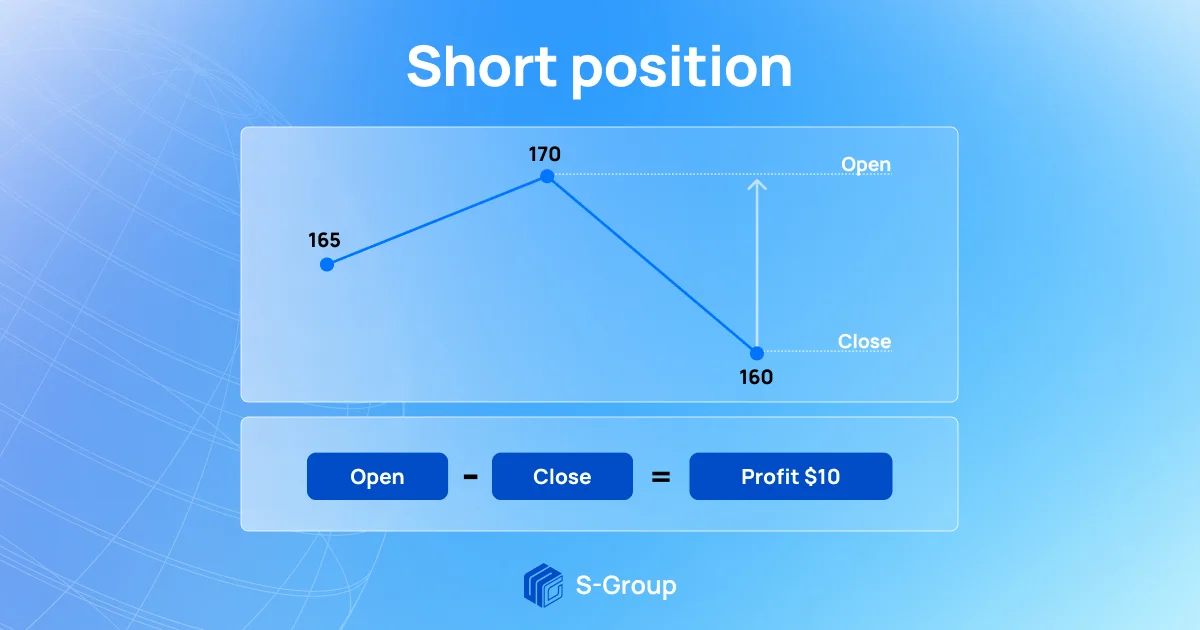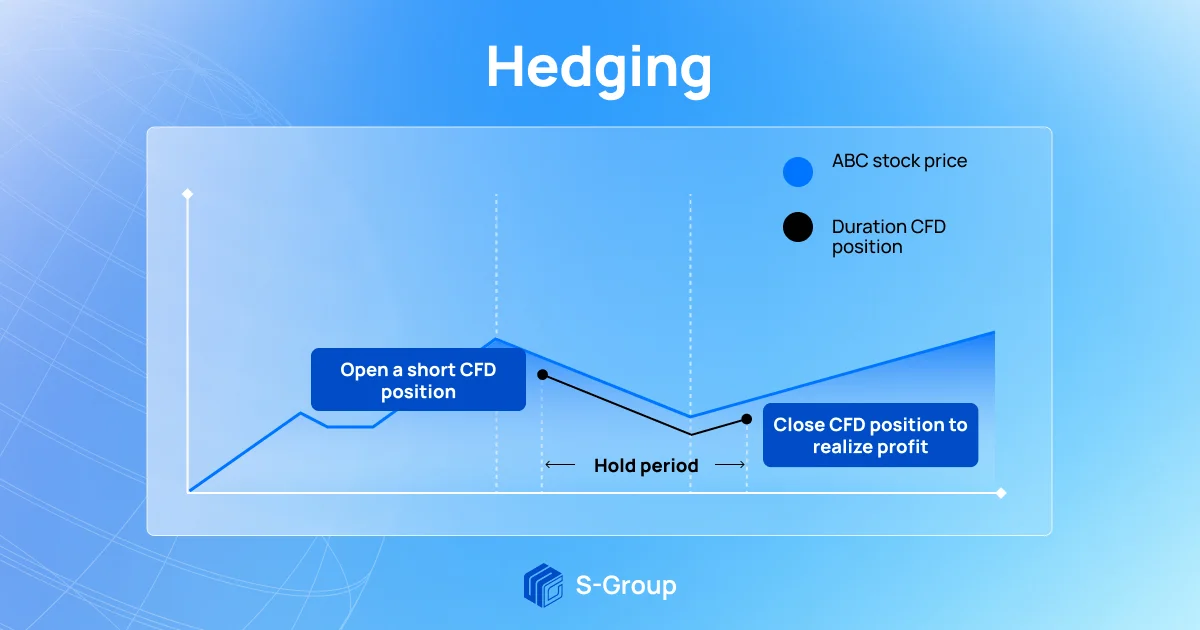What is CFD in simple terms?

We continue to tell you about derivatives on the financial markets. Today, we will explain to you in simple terms what a CFD is, how this instrument works and how you can earn money with it.
Definition of a CFD
CFD (Contract For Difference) is a derivative instrument, which gives the investor and the trader the possibility to trade the difference in price at the opening and closing of a deal for a particular asset.
When trading CFDs, you are not buying an asset, but rather speculating on the rise or fall of its price over a short period of time. If during the term of the contract the price goes up, the buyer will receive the price difference from the seller; if the price goes down, it is the other way around. To put it simply, if an investor thinks that the price of the asset will go up, he buys it; if it will go down, he sells it. If the forecast is correct, the profit will increase in line with the increase in the price.
The price of a CFD contract does not take into account the base value of the asset: only the change in price between the entry and exit of the contract. Thus, a CFD investor also does not own the underlying asset. Instead, he receives income based on changes in the price of that asset. For example, instead of buying or selling physical gold, an investor may speculate on whether the price will go up or down.
In CFD trading, investors can use asset groups such as traditional currencies, cryptocurrencies, stocks, bonds, stock indexes, and commodities such as gold, oil, platinum, etc.
The way CFDs are traded
Using CFDs, investors can perform the following types of trading.
- Open a short or long position
CFDs allow you to speculate on the price movements of assets in any direction. That is, you can profit not only when the market goes up, but also when it goes down.
- If you think the market will go up, you buy or open a long position.
- If you think the market will fall, you sell or open a short position.
When you open a position in CFD trading, you select the number of contracts you wish to trade (buy or sell), and your profit will increase with each pip as the market moves in your favor.
An example of long position trading
Let's say there is an investor, Joe, and he wants to buy CFDs on Apple stock. Joe does a market analysis, sees that the price per Apple share is now $165 and predicts the market will rise to profit from this opportunity.
Joe then buys 100 CFDs of Apple stock at $160 per share. The total value of the deal is $16,000. If Apple stock rises to $170, Joe will earn $10 per share, a profit of $1,000.

An example of trading on a short position
Joe's investor has analyzed the market again and predicts a market decline.
This time, Joe decides to sell 100 CFDs on Apple at $170 per share, which then falls to $160 per share. Joe also makes a profit of $10 per share, which adds up to $1000.

- Trading with Leverage
Leverage gives you access to a large position without having to pay full price. Let's say you wanted to open a position equivalent to 500 shares of Apple stock. In a standard transaction, this would have meant paying full price for the stock. With leverage, you might not have to pay the full price, but rather take a “loan”.
While leverage allows you to spread your capital even further, it is important to remember that your profit or loss will still be calculated based on the full size of your position. In our example, that would be the difference in the price of 500 Apple shares from the time you opened the trade to the time you closed it. This means that both profits and losses can be greatly increased relative to your costs, and that losses can exceed deposits. For this reason, it is significant to pay attention to your leverage ratio and make sure you are trading within your limits.
- Margin Trading
Trading on margin is sometimes referred to as “trading on margin” because the funds required to open and maintain a position, the “margin”, represent only a fraction of the total amount of the position.
There are two types of margin in CFD trading.
- Depositary Margin. Required to open a position.
- Maintenance Margin. Required when a trade is close to a loss that is not covered by deposit margin and any additional funds in the account. If this happens, you may receive a margin call from your provider asking you to add funds to your account. If you do not add sufficient funds, the position will be closed.
Managing the Risk of Trading CFDs

CFDs are complex financial instruments, and trading in them involves a high degree of risk. The value of a trade may rise as well as fall and you may sustain a loss if the market moves against your expectations. Thus, managing the risk of CFDs is an important consideration that you should take into account and apply in your trading practices.
Let's consider popular ways of risk management.
1. Stop Loss and Take Profit orders
Place limit orders to automatically close your positions at a specified profit level, so you do not have to constantly monitor the market.
- A Take Profit order reduces the likelihood of holding positions for long periods, should the price start to fall.
- A Stop Loss order automatically closes the position if the price of the asset becomes lower than you specified. This helps to reduce risk and minimize potential losses.
Learn more about orders on the forex market here.
2. CFD Hedging
Hedging is a risk management technique used to reduce losses. You hedge to protect your profits during an economic crisis, high volatility or other factors. The idea is that if the returns on one group of investments fall, your hedge position helps minimize losses and bring in additional income.
CFD hedging protects an investor's portfolio and allows you to speculate on a downtrend. For example, if you believe that ABC stock in your portfolio may fall in value, you can offset some potential losses. To do so, you open a short position and trade CFDs. If you choose to hedge your risk in this way, any drop in the value of ABC stock will be offset by the profit from your short CFD trade.

Advantages of CFDs

- Higher leverage. Unlike traditional stock trading, the CFD market gives investors a higher leverage. Standard leverage is 30%, but can go up to 50%.
- Access to Global Markets. CFDs are available to investors in all markets around the clock.
- Low entry threshold. You can start trading CFDs with as little as $100 on your account without any brokerage limits.
- Variety of trading opportunities. Brokerage companies offer stock, index, currency, sector, and commodity CFD. Therefore, investors get more freedom in the choice of funds.
Risks of CFD trading
Trading CFDs is fast and requires careful monitoring. As a result, traders must be aware of the considerable risks when trading CFDs. There are liquidity and margin risks, if you cannot cover the decline in value, the broker can close your position.
The risks of leverage expose you to greater potential profits, but also greater potential losses. While stop-loss limits are available from many CFD providers, they cannot guarantee that you will not incur a loss, especially in the event of a market close or a sharp price movement.
Are CFDs profitable to trade?
CFDs are an effective tool, but you should treat them with caution. It is important to remember that despite the variety of opportunities (margin trading, leverage) an investor needs to keep in mind the risks and manage them wisely.
Share
Interesting
Would you like to receive a digest of articles?
One email with the best articles of the week.
Sign up so you don't miss anything.